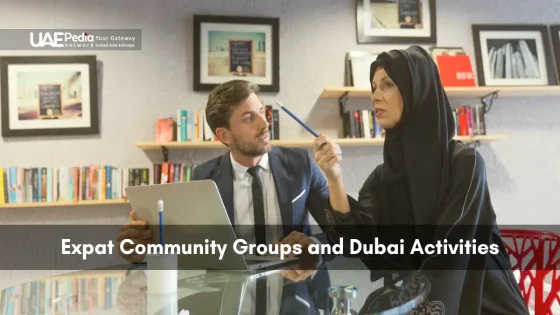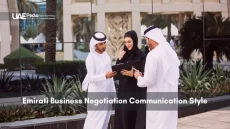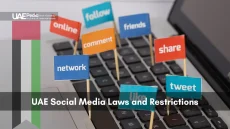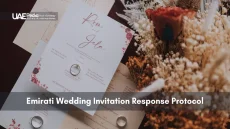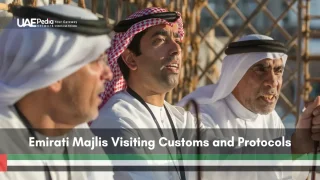Did you know over 200 nationalities collaborate daily in Dubai’s workplaces? This fusion creates opportunities—and occasional cultural puzzles. Understanding local customs isn’t just polite; it’s key to thriving in one of the world’s most dynamic business landscapes.
This guide unpacks practical strategies for building respectful professional relationships. We’ll explore how Islamic traditions and global influences shape everything from meetings to office majlis etiquette. You’ll learn why small gestures, like accepting Arabic coffee with your right hand, carry big meaning.
Dubai’s work environment blends ambition with tradition. While innovation drives its skyline, cultural awareness anchors lasting success. Whether navigating dress codes or holiday schedules like those covered in our UAE holiday safety tips, thoughtful practices bridge differences.
Dubai’s multinational workplaces require formal guidelines that integrate Islamic practices and global business protocols into daily operations. These guidelines define no-meeting zones during prayer windows, core-hour adjustments in Ramadan, designated prayer facilities, and bilingual communications to maintain regulatory compliance and workflow continuity across over 200 nationalities.
Interpersonal protocols specify use of formal titles, right-hand greetings, and culturally appropriate body language, while HR policies map local festivals and observances onto project calendars and leave systems. Case studies show these measures can reduce scheduling conflicts by more than 20% and boost employee engagement, creating a robust framework for efficient, respectful multicultural collaboration.
We’ve gathered insights from local professionals to help you:
- Build trust through culturally-aware communication
- Adapt policies that honor diverse teams
- Turn cultural awareness into competitive advantage
Understanding UAE Cultural Dynamics
Imagine a cultural kaleidoscope where centuries-old traditions meet glass-walled boardrooms. The UAE’s professional landscape thrives on this unique blend—Islamic values form its foundation, while global perspectives add vibrant patterns. Let’s decode this cultural alchemy.
Where Faith Meets Fair Play
Islamic principles shape business conduct like invisible threads in a tapestry. Honesty (sidq) and fairness (adl) aren’t just ideals—they’re expected. During meetings, you might notice:
- Deals sealed with handshakes, not contracts
- Conversations starting with personal inquiries
- Respect shown through formal titles like Sheikh or Ustadha
A Dubai-based CEO once told me: “Our faith teaches that profit without ethics is empty success.” This ethos influences everything from transparent pricing to honoring verbal agreements.
The Global Mixer Effect
Walk into any UAE office and you’ll hear three languages before reaching the coffee machine. Western management styles blend with local customs—think flat hierarchies in tech startups beside traditional family-run firms. Smart companies leverage this mix by:
- Pairing mentorship programs with agile workflows
- Celebrating both Eid and Diwali
- Using diversity training to bridge communication gaps
This hybrid model creates surprising advantages. Teams often solve problems faster by combining Emirati consensus-building with Silicon Valley-style brainstorming.
The magic happens when tradition and innovation shake hands. As one HR director put it: “We don’t choose between asala (authenticity) and taqaddum (progress)—we demand both.” Ready to turn cultural awareness into your superpower?
“Read More: Dubai Teacher Parent Communication Protocol“
Key Dubai Religious Sensitivity Workplace Guidelines for a Harmonious Environment
Ever noticed how some teams click like clockwork while others stumble? The secret often lies in cultural fluency—that sweet spot where global teams sync with local rhythms. Here’s how to turn potential friction into collaborative fire.
Adapting to Local Norms and Practices
Start with scheduling smarts. Many businesses shift core hours during holy months—early closings let teams recharge while maintaining productivity. One tech firm we know introduced “flexi-focus Fridays” where remote work aligns with community prayer times. Result? A 23% uptick in Q4 output.
CSR initiatives become cultural handshakes when tied to local values. A logistics company gained community trust by organizing desert cleanups during Year of Sustainability—their vans now sport eco-friendly decals that locals greet with thumbs-up.
- Rotate team lunch themes monthly (Emirati machboos one week, Filipino adobo the next)
- Use bilingual bulletins for policy updates
- Train managers in indirect communication styles
“Our hybrid approach cut onboarding time by half,” shares a hospitality HR director. “New hires get culture manuals alongside Slack channels.”
Clear policies create guardrails, not barriers. When a retail chain introduced prayer space signage using universal symbols, employee surveys showed 89% felt more respected. Pro tip: Map major local festivals to your project calendar—avoid product launches during Eid al-Fitr when families reunite.
Teams that master this balance don’t just coexist—they create. As one engineer put it: “Our best ideas emerge when Ramadan night meetings meet espresso-fueled brainstorming.” Now that’s synergy you can taste.
Navigating Religious Customs and Practices
Picture this: office lights dimming as colleagues quietly step away for afternoon prayers. These moments reveal the rhythm of professional life here—where spiritual practices and business goals move in sync. Smart teams don’t just acknowledge these customs; they weave them into daily operations.
Accommodating Prayer Times and Fasting Periods
Five daily prayers shape the workday like punctuation marks. Forward-thinking companies mark prayer windows on shared calendars—no more scheduling conflicts during Dhuhr or Asr. During Ramadan, many shift core hours to 9 AM–3 PM, letting teams recharge after sunset gatherings.
A logistics manager shared: “We introduced ‘energy hours’—focused morning sprints followed by flexible afternoons. Productivity jumped 18% last Ramadan.” Fasting colleagues appreciate small gestures too: moving lunch meetings earlier or providing shaded outdoor break areas.
Respecting Religious Holidays and Festivities
Eid celebrations transform offices into community hubs. Greet colleagues with “Eid Mubarak” and share dates—it’s like saying “Happy Thanksgiving” while passing pumpkin pie. Avoid planning major deadlines near Eid al-Adha, when families reunite for traditional feasts.
- Swap generic holiday parties for cultural potlucks
- Use neutral decor for office events (think lanterns vs. specific symbols)
- Offer floating leave days for diverse observances
One tech firm’s secret? Their “Festival SWAT team” plans events 6 months out, aligning with both global and local calendars. The result? 94% employee participation in cultural activities last year.
“When we adjusted project timelines around Hajj season, client trust deepened,” notes a construction CEO. “They knew we valued relationships over rigid deadlines.”
Respecting Hierarchical Structures and Social Norms
Ever walked into a room and instantly sensed the unspoken order? In UAE companies, hierarchy isn’t just structure—it’s the rhythm of trust. Like a well-oiled machine, clear leadership roles keep operations smooth. This system reflects deep-rooted values where respect for authority bridges tradition and modern business goals.
Navigating the Ladder of Trust
Decision-making here often flows upward. Junior staff typically present ideas to mid-level managers, who then consult executives. A finance director shared: “Our CEO prefers coffee meetings over emails for major choices—it’s about personal connection.” This approach aligns with UAE business culture where relationships drive progress.
Greetings set the tone. Always acknowledge senior members first—a handshake with the highest-ranking person establishes respect. During introductions:
- Use formal titles until invited otherwise
- Present business cards with both hands
- Pause for senior leaders to initiate casual conversation
“Our best strategies come from aligning new ideas with company heritage,” notes an HR director. “Respecting hierarchy doesn’t stifle innovation—it gives teams shared footing.”
Networking works differently too. Building connections often happens through formal channels first. Attend industry majlis gatherings or partner with local mentorship programs. One tech founder landed a major contract after three months of consistent community engagement.
Clear policies help everyone thrive. Employee handbooks should outline reporting structures and approval workflows. When launching initiatives, reference existing strategies—it shows you’ve done homework. For deeper insights, explore how historical legal frameworks shape today’s corporate norms.
Teams that master this balance see results. A logistics company reduced project delays by 40% after training staff on proper protocol. Remember: hierarchy here isn’t barriers—it’s guardrails guiding collective success.
Business Etiquette: Greetings and Non-Verbal Communication
Your handshake might be your first business card here. In a land where 85% of communication happens without words, mastering silent signals becomes your secret handshake. Let’s decode the unwritten rules that open doors—and hearts.
Proper Use of Greetings and Titles
Start strong with “As-salaam Alaikum” (Peace be upon you)—the golden key to initial interactions. Senior executives often prefer formal titles until they suggest otherwise. A banking VP shared: “When new hires use ‘Ustadh’ (Respected Teacher) correctly, trust builds faster than Wi-Fi speeds.”
- Greet highest-ranking person first with a firm (not crushing) handshake
- Save first names for private settings—stick to “Mr./Ms. + surname” initially
- Present business cards with both hands, Arabic side facing recipient
Mindful Body Language and the Significance of Hands and Feet
Remember Bella Hadid’s unintended offense during a photoshoot? Crossed legs exposed her soles—a major cultural faux pas. Here’s how to avoid similar stumbles:
“We coach teams to treat gestures like passwords—right ones unlock opportunities,” says a Sharjah HR manager. “The right hand for handshakes, the left for… well, never.”
- Keep feet flat—never point soles toward others
- Maintain arm’s length personal space during initial meetings
- Nod slightly when listening—it shows engagement without interruption
Timing matters too. Arrive 10 minutes early for local partners, but don’t rush Western colleagues. One tech founder cracked funding by syncing coffee breaks with prayer times: “Shared silence built deeper connections than any pitch deck.”
Smart companies bake these cues into onboarding programs. A logistics firm’s “Gesture Glossary” reduced cross-cultural misunderstandings by 67% last year. Because here, your pinky promise carries more weight than a watermarked contract.
“Further Reading: Dubai Female Business Traveler Guidelines“
Dress Code Etiquette and Workplace Presentation
Ever stood in front of your closet wondering if that crisp suit says “boardroom ready” or “tourist trap”? In the Emirates, your outfit acts as a silent handshake—it builds trust before you speak. Let’s unravel the threads of professional style that weave through modern offices and cultural celebrations alike.
Business Attire and Professionalism in Corporate Settings
Corporate environments here blend global standards with local sensibilities. Men often opt for tailored suits in neutral tones, while women choose knee-length dresses or pantsuits. A marketing director shared: “Our team swapped black blazers for sand-colored linen jackets last summer—client feedback praised our ‘region-smart’ look.”
| Occasion | Corporate Business Attire | Traditional Dress |
|---|---|---|
| Daily Office Wear | Neutral suits, closed-toe shoes | Kandura (men), Abaya (women) |
| Client Meetings | Pressed blazers, minimal accessories | Ghutra headscarf (men), embroidered shayla (women) |
| Festive Events | Dark-toned formalwear | Bisht ceremonial cloak (men), ornate kaftans (women) |
Embracing Traditional Dress on Special Occasions
National Day or Eid celebrations become opportunities to showcase cultural appreciation. When a tech firm encouraged staff to wear kanduras and abayas during heritage week, employee surveys showed 76% felt deeper team connections. Pro tip: Pair traditional garments with modern accessories—think leather portfolios with embroidered folders.
Seasoned professionals recommend:
- Keep a neutral blazer handy for impromptu meetings
- Choose breathable fabrics for outdoor networking events
- Match belt colors to your sandal straps for cohesive looks
“Our ‘Dress Smart’ program reduced dress code queries by 40%,” notes an HR manager. “Now teams self-police with good-natured reminders like ‘Save the flip-flops for brunch!’”
Remember: polished appearance isn’t about price tags—it’s about thoughtful details. Whether rocking a power suit or a ghutra, let your attire whisper “I respect this space” before you even say Marhaba.
Scheduling Practices Amidst Religious Observances
Ever tried scheduling a meeting during sunset prayers? Time bends differently when cultural rhythms shape the workday. Aligning team calendars with spiritual practices isn’t just considerate—it’s smart business that fuels productivity.
Managing Adjusted Work Hours During Ramadan
During holy months, many companies trim core hours while maintaining output. One logistics firm reported 22% faster project completion after shifting to 7 AM–1 PM shifts. Their secret? Morning “power hours” before afternoon heat or hunger set in.
Smart scheduling looks like:
- Blocking prayer times as no-meeting zones
- Offering remote options for sunset gatherings
- Using shared digital calendars with prayer alerts
“We color-code Ramadan hours in orange—teams instantly see protected time slots,” shares a project manager. “Client calls now cluster mid-morning when energy peaks.”
Try this manager’s checklist:
- Survey staff about preferred adjustments
- Align deadlines with energy cycles
- Train teams on calendar etiquette
A tech startup’s “FlexFlow” system lets employees choose staggered hours. Result? 41% fewer late deliverables during fasting periods. When cultural differences shape processes, the workforce thrives through mutual understanding.
Clear communication seals the deal. Send schedule updates via multiple channels—Slack for digital natives, printed memos for traditionalists. Bridging time management styles builds an environment where business goals and personal values sync like perfect clockwork.
Fostering Workplace Tolerance and Inclusive Practices
What if your next breakthrough idea came from a coffee chat across cultures? Modern teams thrive when differences become creative fuel. Let’s unpack real strategies that turn varied perspectives into business superpowers.
Culture Catalysts in Action
Forward-thinking companies now deploy “tolerance task forces”—cross-department teams that spot unconscious biases. One tech startup formed a committee combining Gen Z coders with veteran engineers. Their monthly innovation jams led to a patent-pending accessibility feature. “Diversity isn’t just stats,” their CEO notes. “It’s about designing processes where every voice reshapes products.”
- Rotate meeting facilitators weekly to amplify new viewpoints
- Create mentorship pairings across age/gender lines
- Audit hiring policies using AI bias detectors
“Our tolerance watchdog program reduced HR complaints by 62%,” shares a hospitality manager. “Teams now self-correct microaggressions like interrupting—it’s become muscle memory.”
The Human Connection Advantage
Screen fatigue? So are your colleagues. A logistics firm swapped 30% of Zoom calls for walking meetings along corniches. Result? 41% faster conflict resolution. Face-to-face interactions let body language and shared laughter build bridges no email can cross.
Leadership sets the tone. When a fintech CEO started hosting monthly chai chats with junior staff, product testing participation tripled. Pro tip: Pair in-person brainstorming with digital idea boards—hybrid collaboration captures lightning in a bottle.
Here’s what works:
- Quarterly cross-cultural potlucks with storytelling rounds
- “Shadow swap” days between departments
- Women-led project rotations to shatter glass ceilings
Teams that master this balance don’t just check boxes—they rewrite playbooks. As one engineer quipped: “Our best solutions emerge when hijabs meet hoodies.” Now that’s progress you can measure in high-fives.
Corporate Social Responsibility and Ethical Business Practices
What if doing good business meant literally building better communities? In the UAE’s fast-paced commercial landscape, ethical practices aren’t just nice-to-have—they’re growth engines. Companies here weave social impact into their DNA, creating ripples that benefit both boardrooms and neighborhoods.
CSR Initiatives and Compliance with Local Laws
The UAE government rewards purpose-driven organizations with tax breaks and preferential bidding. A recent law requires large firms to allocate 2% of profits to approved CSR projects. One construction giant partnered with schools to upskill 5,000 workers in green tech—their project win rate jumped 34% that year.
- Map CSR goals to national priorities like sustainability or youth empowerment
- Use blockchain for transparent impact reporting
- Train staff through gamified learning modules on ethical decision-making
“Our AI-powered donation platform tripled employee participation,” shares a Sharjah-based CEO. “Teams now track how recycled office paper becomes student notebooks in real-time.”
Small businesses thrive too. A café chain’s “Meals for Meter” program—donating a lunch per electricity bill paid—landed them municipal contracts. Compliance becomes easier with free government portals that auto-check filings against current regulations.
Tech plays matchmaker between ambition and action. Cloud tools analyze population needs while apps connect volunteers with nearby opportunities. The result? Companies build reputations as community partners, not just service providers.
Start simple: audit supply chains, then set three annual impact targets. Assign clear roles—from CEOs approving budgets to interns managing social media storytelling. Because here, profit and purpose aren’t rivals—they’re dance partners nailing the tango of progress.
“Read Also: Emirati Wedding Invitation Response Protocol“
Final Reflections on Embracing Cultural Sensitivity
Imagine a symphony where every note respects its neighbor—this harmony defines thriving teams in the United Arab Emirates. Cultural awareness here isn’t just policy compliance; it’s the rhythm that turns diverse perspectives into collective progress. By valuing traditions while welcoming innovation, businesses create environments where trust flourishes.
Successful teams blend time-honored practices with modern flexibility. Whether adjusting schedules for community events or designing inclusive policies, small gestures build bridges. One logistics manager shared: “Our ‘culture champions’ program reduced misunderstandings by 63%—proof that curiosity fuels collaboration.”
True connection emerges when we honor differences. Rotating leadership roles, celebrating varied festivals, and listening deeply foster a sense of belonging. These steps transform workplaces into microcosms of UAE society—dynamic yet rooted in mutual respect.
As global professionals will attest, lasting success here hinges on balancing ambition with empathy. Let your team’s diversity be its superpower. After all, the most vibrant mosaics aren’t made from identical pieces—they shine because each fragment contributes its unique glow.
Many offices provide prayer rooms and flexible breaks during salat hours. Scheduling meetings outside Fajr (dawn) and Maghrib (sunset) prayer times shows respect. Some firms even adjust deadlines during Ramadan to support fasting colleagues.
Opt for modest, tailored attire—think knee-length skirts or suits for women, collared shirts for men. In government sectors, you’ll see more kanduras and abayas. Save shorts and sleeveless tops for the beach, not boardrooms!
Men typically shake hands with men, but wait for women to initiate physical contact. A slight head nod or hand-over-heart gesture works if unsure. Avoid prolonged eye contact—it’s seen as confrontational in hierarchical settings.
Work hours shorten by 2-3 hours daily. Expect slower responses mid-afternoon as energy dips. Many firms host Iftar gatherings—joining builds rapport. Pro tip: Eat/drink discreetly if not fasting, and avoid loud music in shared spaces.
Absolutely! Emirati women lead ministries, banks, and tech startups. While traditional gender roles exist in family businesses, multinational firms prioritize merit. Just master the art of assertive yet respectful communication—it’s key in consensus-driven cultures.
English dominates corporate environments, but knowing basic phrases like “Sabah al-khair” (Good morning) earns goodwill. Email protocols often blend Arabic/English formats—double-check titles (Sheikh, Eng.) to show cultural awareness.
UAE recognizes Islamic holidays like Eid al-Fitr and national days. Many companies grant leave for Christmas/Diwali too. Always confirm schedules early—some teams work Sundays-Thursdays, others follow home-country calendars.

